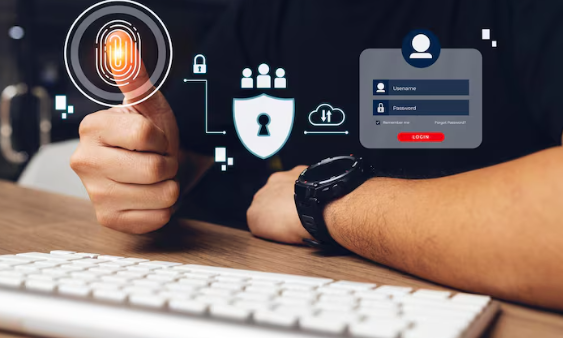As hybrid work and multi-cloud environments expand the attack surface, enterprises must rethink access control. Discover how modern cybersecurity services, cloud computing security, and IT solutions can build a resilient defense perimeter. STL Digital partners with enterprises to design and implement next-generation security architectures that protect digital assets while enabling business agility.
A New Security Frontier
The way we work has fundamentally changed. Enterprise perimeters, once neatly contained within office firewalls, are now stretched thin across home offices, cloud services, mobile devices, and third-party platforms. This shift demands a redefinition of access control—one that considers today’s fragmented, dynamic environments.
Traditional perimeter-based models no longer suffice in the face of today’s complex IT ecosystems. With the growing sophistication of cyber threats and proliferation of endpoints, businesses must pivot toward identity-centric, policy-driven, and cloud-agnostic frameworks for enterprise security.
1. The Reality: Digital Perimeters Have Expanded
Enterprise networks now span hybrid and remote workers, personal devices, cloud services, and distributed applications—broadening the security attack surface in dramatic ways. A 2024 IBM Cost of a Data Breach Report reveals that breaches involving data stored across multiple public and cloud environments—and on-prem systems—are substantially more expensive, averaging $5 million, compared to breaches with on-premises-only data.
Additionally, a separate survey reported by Businesswire found that 49% of CISOs consider hybrid and remote employees the greatest security risk, citing concerns like unmanaged endpoints, unsecured home networks, and insufficient identity controls.
These insights underscore why zero-trust architectures, micro-segmentation, and continuous threat monitoring are essential to effectively securing modern, distributed enterprise environments.
2. Why Traditional Access Models Fall Short
Legacy access control mechanisms often rely on static rules and central firewall logic. These methods create security blind spots when dealing with:
- Shadow IT usage (unapproved apps)
- Decentralized data sharing
- Third-party integrations
- Unmanaged endpoints
As enterprise users and devices operate beyond the confines of the corporate network, these outdated frameworks fail to verify identity or context in real time.
In response, leading organizations are adopting Zero Trust Architecture (ZTA)—a security model that assumes no user or device is inherently trustworthy, regardless of network location.
According to Gartner, Zero Trust is not a product but a guiding cybersecurity philosophy that enforces continuous verification across all access requests.
3. The Role of Cloud Computing Security
As more applications and data move to the cloud, cloud computing security becomes central to access control. Businesses must secure:
- Multi-cloud environments (AWS, Azure, Google Cloud)
- SaaS platforms (SAP, Salesforce, Workday, Microsoft 365)
- Cloud-native apps built with containers and microservices
Key practices include:
- Identity and Access Management (IAM): Enforce least-privilege access.
- Cloud-native firewalls: Built-in controls from providers like AWS WAF or Azure NSG.
- Microsegmentation: Divide networks into smaller zones to isolate threats.
Modern IT solutions and services integrate these capabilities across cloud and on-prem environments, helping businesses maintain security posture without compromising agility.
4. Enterprise Security in a Fragmented Landscape
Fragmented security systems and inconsistent policy enforcement create dangerous blind spots that attackers can exploit. According to the 2025 Verizon Data Breach Investigations Report, credential abuse accounts for 22% of breaches, making it one of the most prevalent initial access vectors.
To overcome this fragmentation, businesses are embracing:
- Single Sign-On (SSO) and Multi-Factor Authentication (MFA)
- Federated identity solutions across hybrid infrastructure
- Security Information and Event Management (SIEM) platforms
These tools help consolidate visibility and orchestrate rapid responses to anomalous access behavior.
5. AI and Automation in Modern Cybersecurity Services
Modern cybersecurity services go beyond perimeter defenses by integrating AI for proactive threat detection. AI-driven platforms continuously monitor behavior, learn from patterns, and flag abnormal access in real time.
Some common applications include:
- Behavioral biometrics for access verification
- Risk-based access policies that adapt to user behavior and location
- Automated incident response to contain threats instantly
AI-powered access control not only strengthens protection but also reduces manual workloads for IT teams, freeing up capacity for strategic innovation.
6. Strengthening Governance with Managed Security Service Providers (MSSPs)
Partnering with a managed security service provider gives enterprises access to 24/7 threat intelligence, advanced monitoring, and regulatory compliance support. MSSPs bring deep expertise in:
- Governance, Risk & Compliance (GRC)
- Access lifecycle management
- Endpoint detection and response
- Threat hunting and dark web monitoring
These providers help bridge skill gaps and ensure that access controls align with evolving business and regulatory requirements.
7. Building a Resilient Access Control Strategy
To thrive in today’s hyperconnected business landscape, organizations must invest in resilient, identity-centric access strategies that align with digital transformation goals.
Key principles include:
- Continuous verification: Trust nothing by default—authenticate every session.
- Least-privilege access: Grant only the minimum required access based on roles.
- Context-aware controls: Factor in user behavior, device type, location, and risk level.
- Automation and AI: Leverage smart analytics to detect and respond to anomalies in real time.
Redefining Enterprise Security for the Future
Digital transformation has broken down traditional walls of enterprise IT. To secure expanding digital perimeters, organizations must modernize access control with a layered approach—blending Zero Trust principles, AI innovation, and expert-led IT solutions.
By integrating cloud computing security, leveraging cyber security services, and partnering with trusted managed security service providers, enterprises can create a future-ready security framework that is scalable, intelligent, and resilient. STL Digital delivers tailored security strategies that combine advanced technologies with deep industry expertise, ensuring robust protection without compromising operational efficiency.



